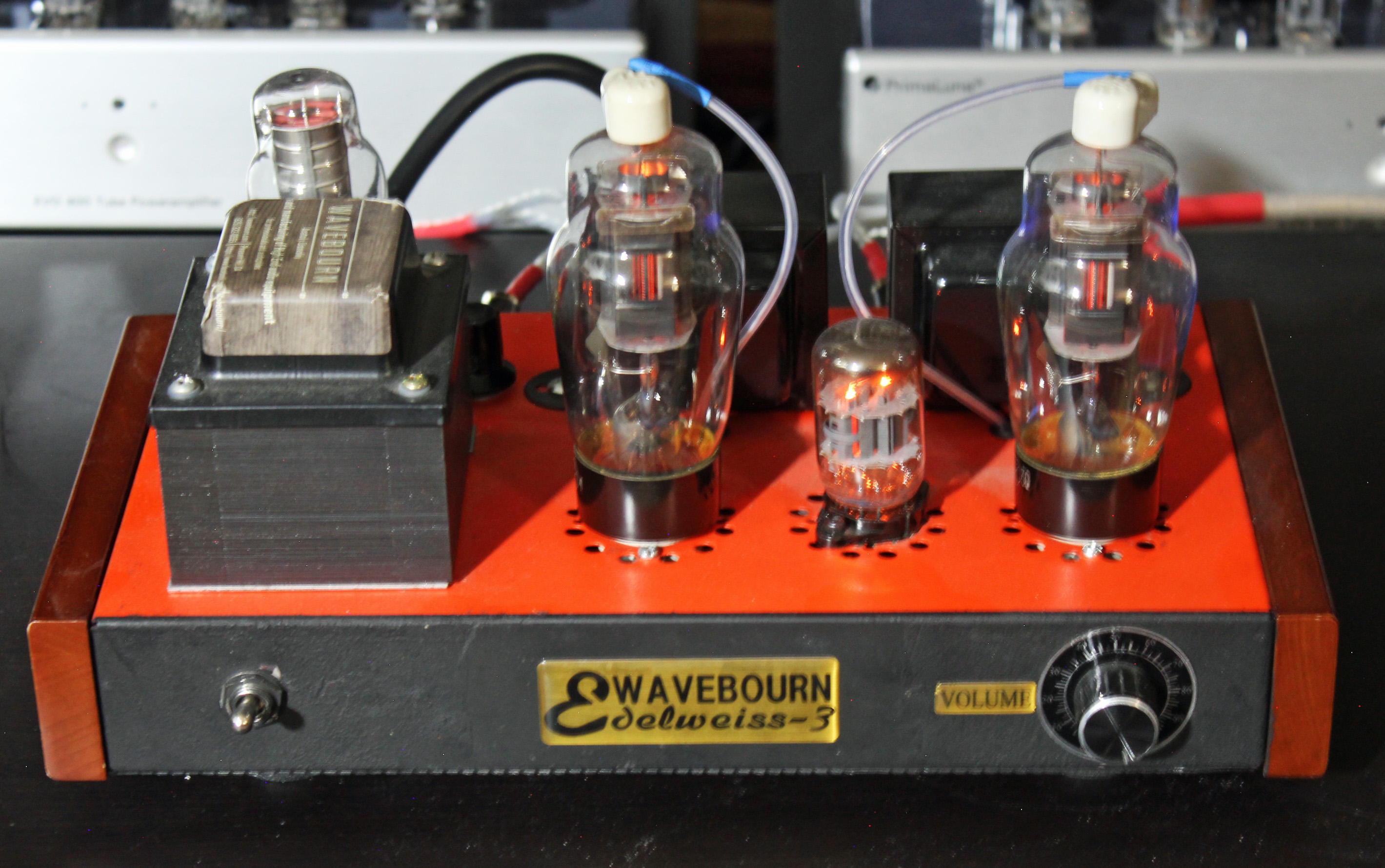Wavebourn Labs Edelweiss-3 SEP Amplifier
Tip #106
Dick Olsher (June 2024)

Audio designer Anatoliy Lisovskiy was educated at the Tomsk University of Control Systems and Radio Electronics (TUSUR). Audio was his passion: “I played in a rock group, and designed for it amps, guitar effects, synthesizer, mixers, etc... I thought when I graduated in 1981 that I know precisely what is needed to get the best audio reproduction, that tubes were obsolete, transistors were the best. My last audio amplifier then delivered 200W per channel, I thought that it was perfect, and nothing better can be done.”
That was until 2002, as Anatoliy describes it: “In a small high-end store in Walnut Creek, California I dropped my jaw when heard as if a real Diana Krall playing and singing. The amp was single ended with 211 output triodes, something like 10W per channel, and very inefficient Magnepan speakers, huge like doors. It was not loud, but soo reeeal, I got goosebumps, and sphincters almost unleashed! Since then I started again, with vacuum tubes, trying to get as real as possible sound reproduction. I had my day job in software development industry, but could not shake off the desire to make my own high end equipment. My previous experience with tone shaping for rock group appeared handy, instead of creating audible musical distortions I felt and knew what is needed to make distortions as if to disappear. And now since my job is my passion, I am eager to bring to the market what I finally earned to do: affordable equipment of high-end quality sound reproduction.”
That was the genesis of Wavebourn Labs. I happened to connect with Anatoliy via eBay after I purchased his preamp/headphone amp (see review on Youtube: https://www.youtube.com/watch?v=jrjgWprElDc). Some months later I decided to purchase a prototype of his single-ended pentode power amp - the Edelweiss-3 - (https://www.youtube.com/watch?v=y2hMkFTvA38) as I was intrigued by the circuit and choice of tubes.
Some basic specs:
· Input: 0 dB (0.775V), RCA jacks, 50K stereo pot.
· Impedance taps: 4 and 8. Actually, 4-6 and 8-12, should be optimal.
· Power: at least 6W for <1% total harmonic distortion.
· Features: Soft asymmetric saturation (inaudible clipping), negative output resistance for damping of woofers (servo-control of speakers).
· Bandwidth: 10 Hz-90 kHz; -3 dB from 20 Hz at full power.
The available beam power tube options have expanded since then to include the 6L6, 5881, EL34, KT77, KT88, and KT120. My unit was outfitted with the 4П10С, a nearly forgotten Russian octal beam power tube, similar to the Raytheon VT127, with a plate dissipation of 15W. It was manufactured in the late 1950s as a radar sweep tube. The driver/preamp tube is still the 8CB11 compactron, a twin video pentode whose filament is powered from rectified DC for no audible hum. The power supply uses a VR150/Russian SG4S voltage regulator tube that glows purple when it is conducting.
Speaker damping is selectable via a switch in order to facilitate different speaker designs. The switch cycles from no feedback, through two negative feedback positions, to positive feedback which gives a negative output impedance for active servo-damping of woofers.
Since the Fyne Audio F703SP loudspeaker is currently inhouse for review, and because it features a sensitivity of 94 dB and a tube-amp friendly impedance magnitude, I decided to give the Edelweiss-3 a listen in this context. I was surprised by its very decent extension at the frequency extremes. The best feedback setting was clearly the fourth position, positive feedback, which yielded a wonderfully detailed and defined bass range. This is huge! When it comes to bass definition, the Edelweiss is far superior to my SET amps.
The midrange was also competitive with much more expensive SET amps: lovely, pure and sweet harmonic textures. This is a clean and quiet amp that won me over on female vocals and jazz ensemble. Soundstage transparency and image focus were also superb. But when it comes to orchestral music, the Fyne Audio loudspeaker is happier with a minimum of 30 wpc. The Edelweiss would clip occasionally on dynamic peaks, but it redlined without any sonic fuss, that is to say almost inaudibly. If a clean 6 wpc suffices for your needs, then the Edelweiss-3 is definitely worthy of a serious audition.